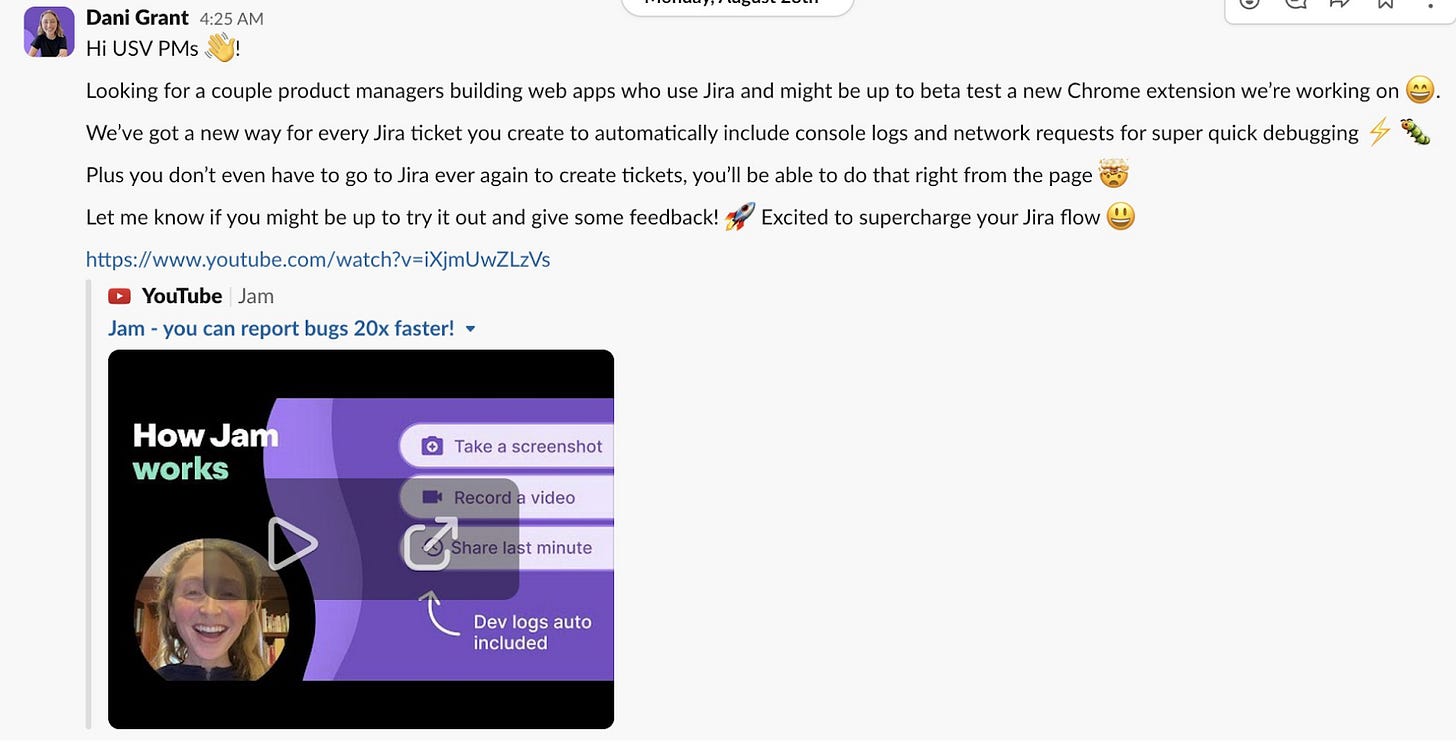From seven failures to 10x growth
Jam’s CEO on product-market fit and hockey stick growth
👋 Hi, it’s Kyle Poyar and welcome to Growth Unhinged, my weekly newsletter exploring the hidden playbooks behind the fastest-growing startups.
Jam, the seed-funded bug reporting tool, achieved 10x usage growth in 2023 and just crossed 1,000,000 Jams created. Getting users to adopt a new product is hard, says CEO and co-founder Dani Grant, and it took Jam 18 months and seven failed launches before it finally worked. Dani joined Growth Unhinged to unpack how they did it – everything Jam did to grow from 0 to one million. (You can read the full Zero to One series here.)
Growing from 0 to 1,000 was A LOT harder than the next 999,000. This is when giving up didn't sound so crazy. It took 18 months and seven failed launches before the 8th finally worked.
As a former Product Manager (PM) at Cloudflare, I was used to launching something and immediately having thousands of users adopt it. At Jam, I thought I’d see it, too.
We started with 45 user interviews out of the gate. There was so much emotion and frustration around the problem we wanted to solve – so much so that one of the earliest users we interviewed offered to make the Jam brand (which is still our brand to this day). Another early interview offered to pay for the product and onboard his entire team even though there was no product to sell. Each time we’d launch something, tons of people would sign up but then nobody would use it.
We had to do something radically different to figure out a version that worked and finally get to product-market fit (PMF). Here’s exactly what we did.
This is a guest post from Dani Grant, CEO and co-founder of Jam.
From 0 → 1,000 Jams
Why did v8 of Jam work? We ignored tons of good advice and tried something different.
1) Dogfooding
All the startup advice says you should launch early and get your product into users’ hands. But instead, we didn't let a single user in until we were happy using it ourselves. Those weeks of internal testing made all the difference. We were harsh critics, and the feedback loop was super tight.
We spent six weeks building the eighth iteration of Jam and then tested it in house for a few weeks until we got to the point where we’d miss the product when it was gone.
2) Small scope, high quality
People say if you're not embarrassed by your v1, you've shipped too late. People told us to “just ship” because you’ll know you have PMF when people are even willing to use a broken product.
This is outdated advice. Today, quality is non-negotiable. We didn't ship until the product was bug-free. This made a huge difference in early usage.
3) Few, focused pilots
We only let in a handful of early users. Our first goal was just five weekly active users (WAUs).
We found them by posting in Slacks and subreddits. Then we validated their need for Jam before granting access. That way we could test our hypothesis by whether or not they retained.
We were extremely focused and had a hypothesis about which customers would find so much value in the product that they would use it every week. Specifically, we looked for companies with a complicated front end where the quality of their app directly corresponds to revenue.
All of the pilot customers, except one, were brand new to Jam. We sought out new customers, people who had never tried an earlier version of Jam, because we learned that it’s nearly impossible to change a first impression. We needed to experiment with a new cohort that had zero preconceived notions.
4) Retention
We only tracked one metric in the early days: retention.
You can't fake retention. If a product is not useful, you don't retain. Our team tracked usage in a simple Google Sheet and watched for streaks week over week. Only once retention was healthy did we open up Jam to the public.
When we were 19 weeks in, two of the original five pilots had 19 week sprints. Finally, 20 weeks after the pilots and more than six months after starting work on v8, we were ready to launch.
From 1,000 → 50,000 Jams
Keep reading with a 7-day free trial
Subscribe to Kyle Poyar’s Growth Unhinged to keep reading this post and get 7 days of free access to the full post archives.







